Turner pairs the Disznókö wines available in the UK with his own suggested food matches

Aszú berries at Disznókö
The wines of Disznókö have been on my radar for a good few years now. My first ‘imposter syndrome’ wine event, sat with the great and the good of the UK wine trade and wondering if I’d been invited by mistake, was a vertical tasting of their Aszú 6 Puttonyos range with AXA Millésimes CEO Christian Seeley. Far too frightened to ask any questions, I proceed to stick my nose in glass after glass of what I can only describe as nectar of the gods! I’ve been a huge fan of Aszú wines, and Disznókö in particular, ever since.
This February’s tasting, a pre-event in the run up to the Furmint February tasting at the end of the month, has two particular draws for me. Firstly, Disznókö’s technical director László Mészáros has flown in specially for the occasion. Not only that, but this very charming gentleman was presenting the full range from the portfolio. Given the understandable limitations on the wines available in the UK, this was definitely a chance not to miss.
Aszú styles shine

Disznókő means “wild boar stone” referring to a large volcanic rock found at the heart of the vineyard
Clearly the most famous style of wine produced in the region of Tokaj are those made with Aszú berries. This is the Hungarian word for shrivelled, botrytis-infected grapes, which are then painstakingly picked berry by berry late into the season. These tiny, sticky, sweet berries are then added – either whole, crushed or as a paste – to grape juice, fermenting must, or young wine. All the options depend on the vintage, how much botrytis has set that year, desired style and so on.
The main grape for Aszú wines, and the Tokaj region en masse, is Furmint. It’s perfect for Aszú berries given its compact bunch, thin skins, late ripening nature and its crucial high acidity which keeps a wonderful balance for the resulting wines. Grapes such as Hárslevelü and Zeta can find themselves in the blend, but often these are preferred to keep for other wine styles.
The next consideration is the idea of ‘Puttonyos’. A puttony is the name for the basket that the aszú berries were historically harvested into. It was then a case of how many puttony of berries do you add to a barrel (traditionally known as a gönci at 136L) of wine/juice in order to get your desired style or sweetness. After the 2013 regulation changes, we’re left with just 5 Puttonyos or 6 Puttonyos as a labelling category, with all Aszú labelled wines required to hit a minimum of 120g/l residual sugar, the minimum for 5 Puttonyos.
The range of Disznókö Aszú wines on show included a 2013-2017 vertical of 5 Puttonyos and selected vintages of 6 Puttonyos. In a reverse of my thoughts on most dry wines, I think these wines are simply sublime with bottle age. The Tokaji Aszú 5 Puttonyos 2013 (currently available in the UK) was full of pronounced lime marmalade notes, sweet lemons and limes, orange blossom, guava, passion fruit, pineapples and the beginnings of toffee apple, but with integrated sweetness and a beautiful, round texture. The Tokaji Aszú 6 Puttonyos 1995 was sheer deep brown joy, with concentrated and complex nuts, spices, toffee, butterscotch, mushrooms, guava, pineapple, passion fruit, rose petal and a fabulous sweet and sour finish… but still fresh as a daisy. For those of you looking to go to the next level, check out the Tokaji Aszú 6 Puttonyos Kapi Vineyard 2015, from lighter clay soils with volcanic pebbles, that gives the most elegant Aszú wines you’ll be lucky enough to taste.
Other styles worth seeking out

Disznókö’s technical director László Mészáros flew in for the event
As well as the famous Aszú wines, portfolios across the Tokaj region have been boosted by other wine styles, both new and old. Furmint February, for example, always concentrates on the dry white wines produced from the acidic Furmint grape. Disznókö’s Furmint – Tokaji Dry 2022 is always a hit at dinner parties with soft, fresh, green and citrus fruits, but plenty of mineral backbone and salinity. For a bit of difference to many other dry Furmint styles, it also produces the barrel-fermented Inspiration – Tokaji Dry 2018 for those of you after a bit more smoke.
Arguably the most exciting styles to come out of Disznókö right now are the Szamorodni wines. An expression meaning “as it comes”, these are wines made from whole, harvested bunches of both healthy and botrytised grapes. The sweet style, Tokaji 1413 Édes Szamorodni 2019, is a much more elegant sweet wine, much less “in-your-face”, but still with plenty of honey, blossom, toast with minerality coming through in the finish. One that isn’t currently imported, but will hopefully be soon, is the Tokaji Száraz Szamorodni 2019, a wine that has been allowed to ferment to dryness under a layer of flor. It’s got all those lovely bruised apple and nutty notes of fino sherry, but still with an underlying character of yellow plums, dried lemons, salinity and the exceptional lifting acidity.
Food for thought
An enjoyable theme for the event was the opportunity to attempt to pair a selection of food matches you might never have thought about with such an illustrious line-up of wine styles.
Each of us in the room were encouraged to taste, nibble and chew on a variety of spicy, savoury and sweet dishes and come up with our very own ideal pairings. Lord knows what everyone else thought, but below was my humble attempt to do just that with the wines and vintages currently commercially available in the UK.
Tokaji Aszú 6 Puttonyos Kapi Vineyard 2015 (RRP £145)
With Chicken tikka bouchée with honey yoghurt and coriander
Plenty of sweetness in the wine to match the spice mix in the tikka, but the extra freshness from the Kapi vineyard allowed the yoghurt and coriander garnish to come to the fore.
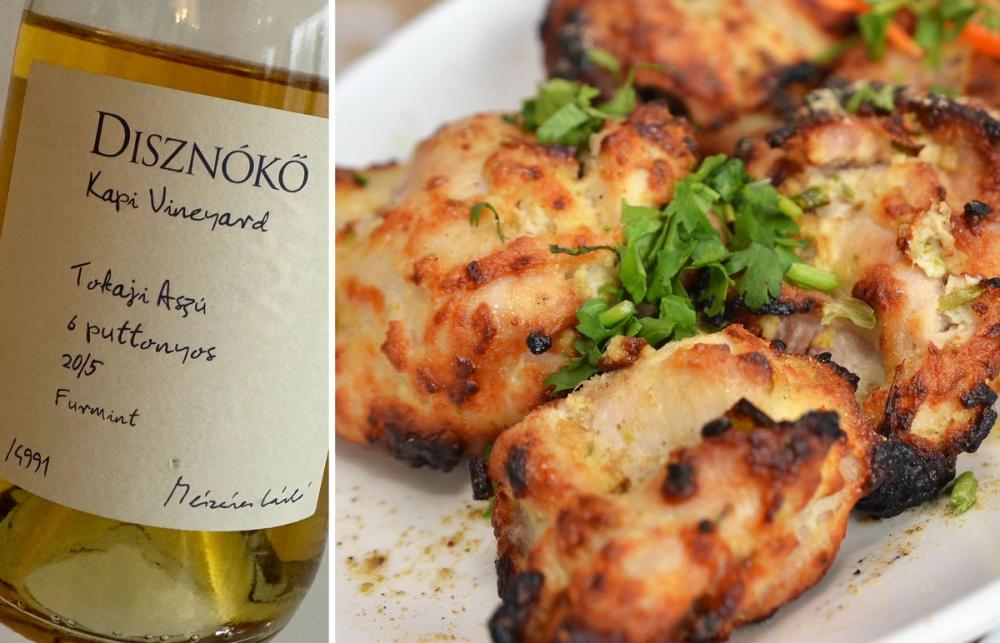
Kapi + Chicken tikka
Tokaji Aszú 6 Puttonyos 2016 (RRP £75)
With Spiced crab tartlet with avocado purée
Sweetness of the wine and spice of the crab mix went well, but also the creamy crab mixture needed something with a bit more mouthfeel to it. No flavours really dominated, allowing you to taste everything in turn as the finish progressed.
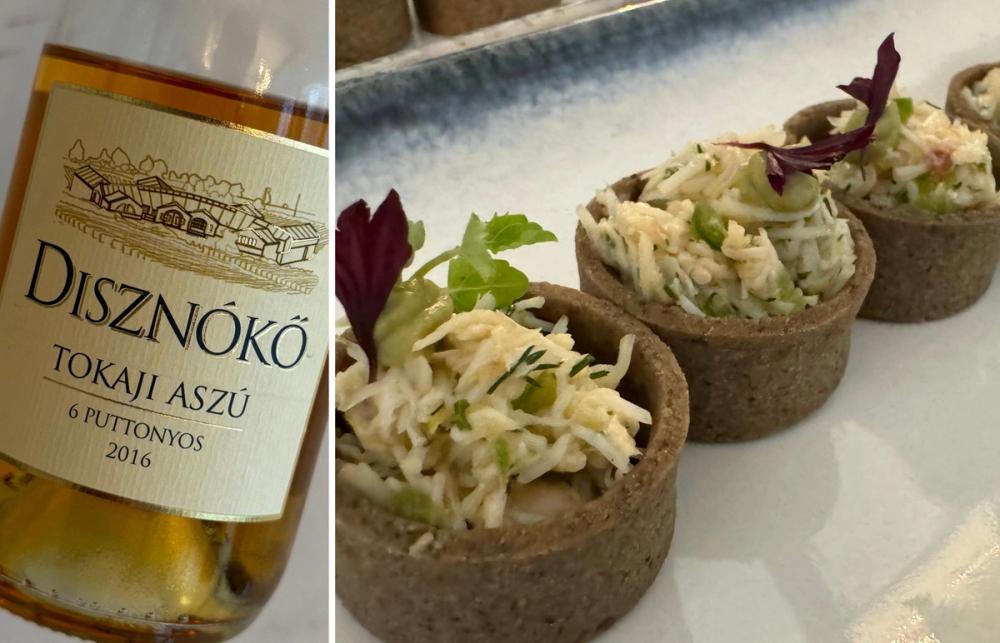
6 Puttonyos + crab
Tokaji Aszú 5 Puttonyos 2013 (RRP £50)
With Cajun tuna tataki with wasabi emulsion and caviar
Sweetness of the wine and spice of the wasabi went well, but also the more delicate mouthfeel suited the raw fish a bit better for me than the others.

5 Puttonyos + tuna
Tokaji 1413 Édes Szamorodni 2019 (RRP £22)
With crispy stuffed gnocchi with tomato, mozzarella and pesto
The slight flor-y note in the wine, although a sweeter style of Szamorodni, evokes memories of croquetas in Jerez, so this might have been my heart matching this wine rather than my head, but well worth a try.
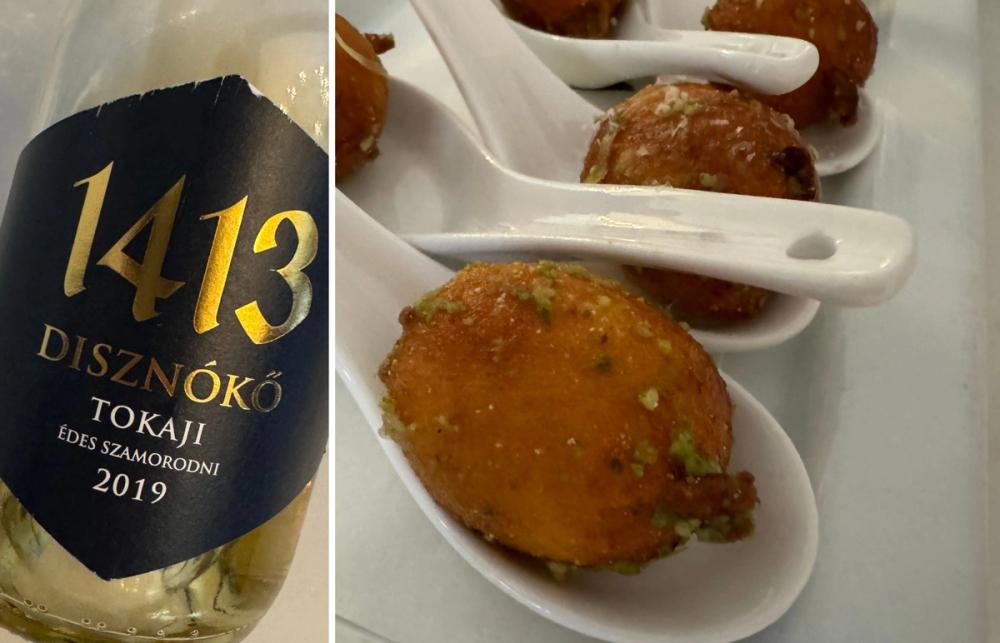
Szamorodni + gnocchi
Tokaji Late Harvest 2020 (RRP £20)
With spiced lamb kofta
These weren’t hot hot, but definitely koftas with a kick, so that sweetness from the late harvest style helped temper any chilli burn. Fresh acidity lifting the fatty meat.

Late Harvest + kofta
Inspiration – Tokaji Dry 2018 (RRP £29)
With Parma Ham and bocconcini, basil and molasses
The sweet and smoky meat went nicely with those smoky oaked notes in the Inspriation. The salty bocconcini and basil brought out the fruit notes in the wine.
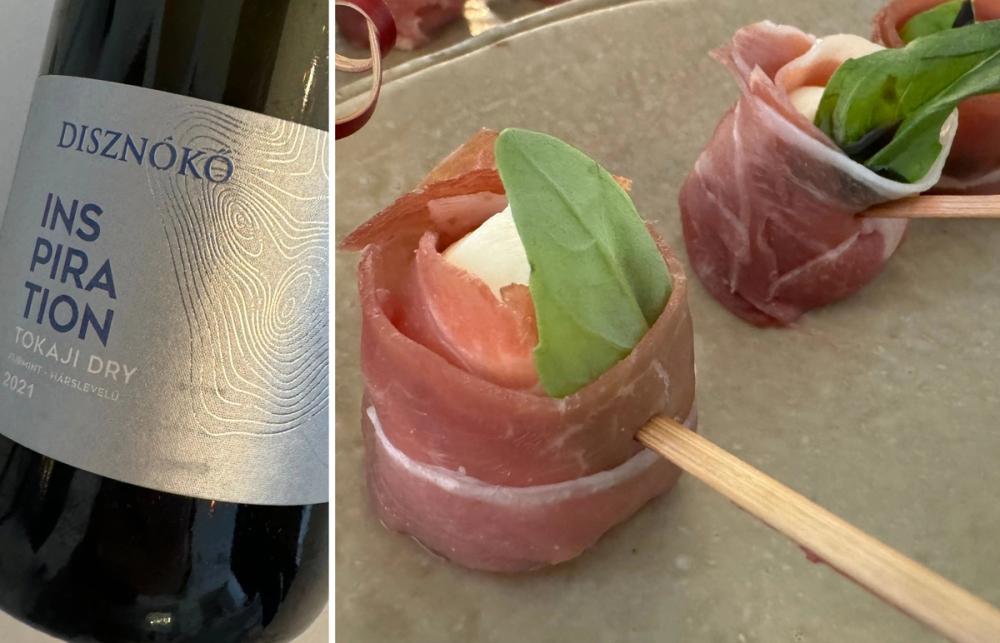
Inspiration + Parma ham
Furmint – Tokaji Dry 2022 (RRP £19)
With creamed asparagus with parmesan
The notoriously difficult asparagus dish was a fresh, spring dish that suited the fresh wine. The acidity really cleaned up the cream and cheese, with the minerality of the wine and the parmesan matching nicely too.
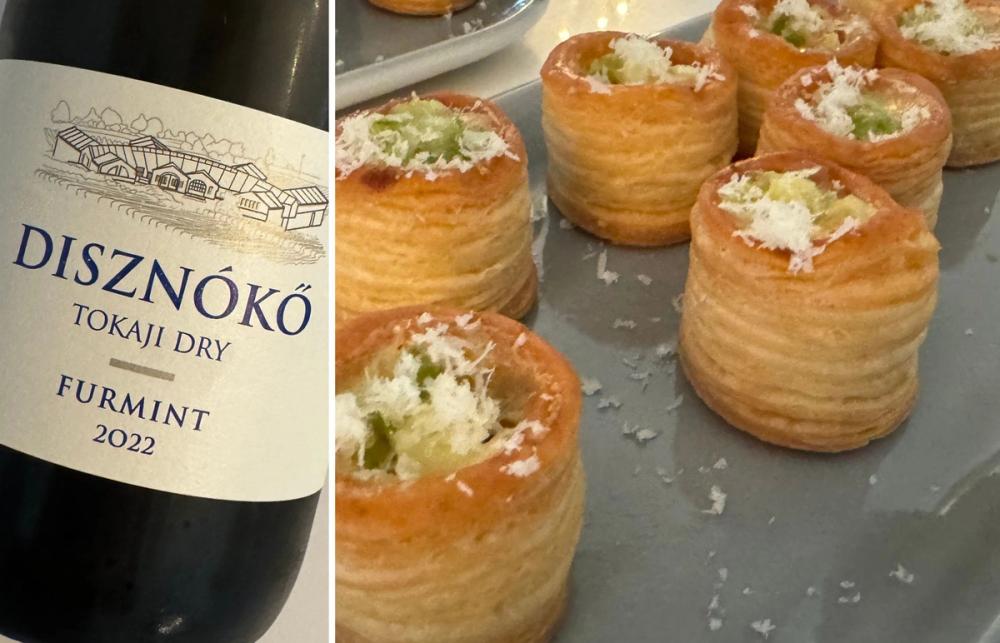
Furmint + asparagus with parmesan
For more information on the wines of Disznókö, please click here
For current vintages in stock in the UK, please contact Ivo Stoyanov at Gonzalez Byass on istoyanov@gonzalezbyassuk.com
Mike Turner is a freelance writer, presenter, educator, judge and regular contributor for The Buyer.






























